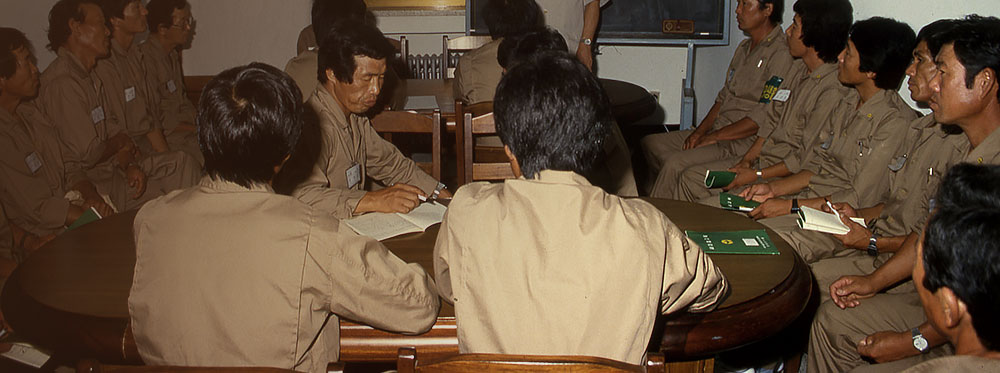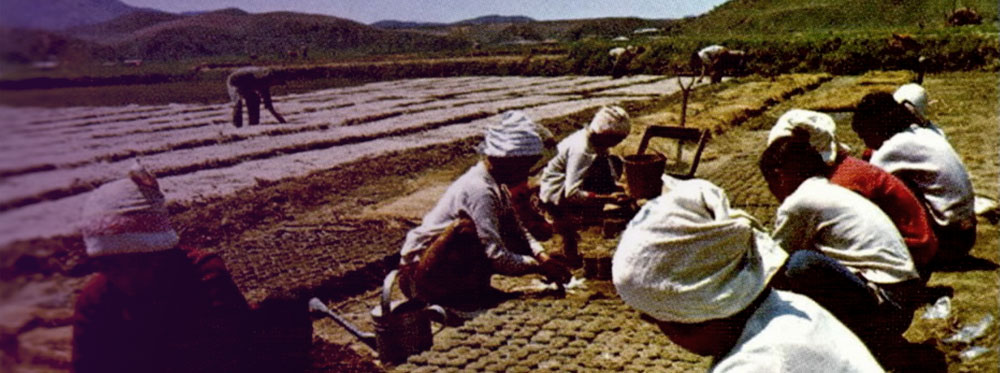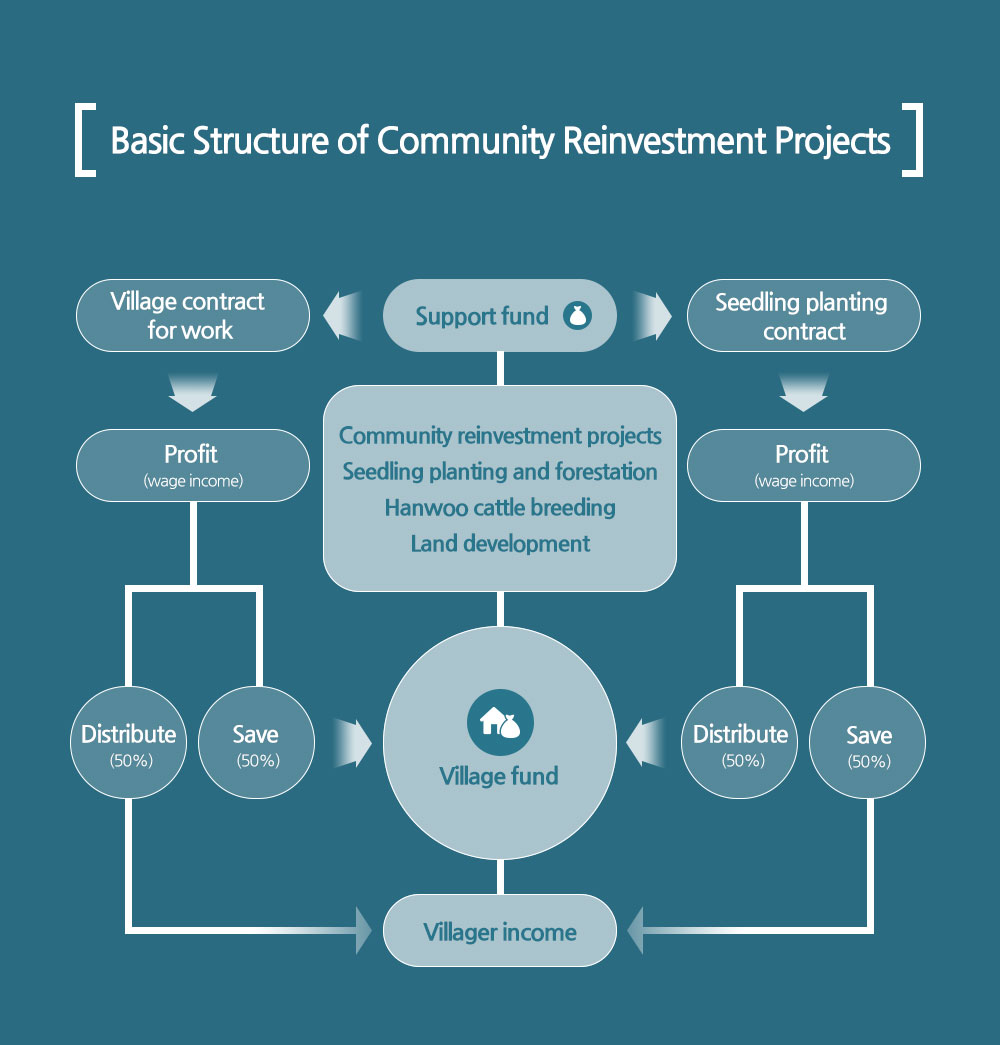Methods of Operation

The “First Support to Better Villages” Principle

Saemaul Undong Training

Community Reinvestment Projects

Basis Structure of Community Reinvestment Projects
Support Fund - Community reinvestment projects, Seeding planting and forestation, Hanwoo cattle breeding,Land development-Village fund - Villager income
Support Fund > Village contract for work > Profit(wage income) > Save(50%),Distribute(50%)
Support Fund > Seedling planting contract > Profit(wage income) > Save(50%),Distribute(50%)
Save > Village fund
Distribute > Villager income











